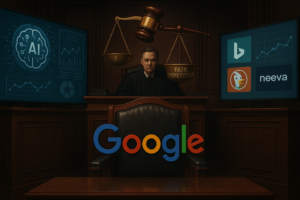Advancing Modernization: The Role of AI in Engineering at the U.S. Army Corps of Engineers
On June 3, 2024, Dr. David Pittman of the Engineer Research and Development Center engaged in a groundbreaking AI demonstration led by Alexandra Henderson Connors from the Kansas City District of the U.S. Army Corps of Engineers. This event highlighted how AI is revolutionizing engineering practices, improving project efficiency and effectiveness.
In an era where technology is rapidly advancing, artificial intelligence (AI) stands at the forefront of innovation, reshaping various industries, including engineering and construction. On June 3, 2024, a significant event underscored this transformation: Dr. David Pittman, the director of the Engineer Research and Development Center (ERDC), participated in an AI demonstration conducted by Alexandra Henderson Connors, the construction management technology modernization officer for the Kansas City District of the U.S. Army Corps of Engineers.
The meeting took place in Kansas City, Missouri, and aimed to showcase the applications of AI in modern engineering practices. As the demand for efficiency and precision in construction projects grows, the U.S. Army Corps of Engineers recognizes the importance of integrating AI technologies into their operations. This convergence of expertise and technology promises to revolutionize how projects are planned, executed, and monitored.
Key Benefits of AI in Engineering
- Data Analysis: AI can analyze vast amounts of data at unprecedented speeds, enabling engineers to make informed decisions quickly.
- Resource Optimization: AI algorithms can optimize resource allocation, predict project outcomes, and enhance safety measures on job sites.
- Cost Savings: These capabilities contribute to significant cost savings and improved project delivery times.
One of the standout features demonstrated was AI’s ability to create predictive models that assess risks and potential challenges throughout the project’s lifecycle. By leveraging historical data and real-time inputs, AI can identify patterns that human analysts might overlook, enabling proactive management of potential issues before they escalate.
Moreover, the incorporation of AI in engineering is not merely about efficiency; it also enhances safety. AI systems can monitor job sites continuously, identifying hazardous conditions and alerting personnel instantly. This capability is particularly crucial for the U.S. Army Corps of Engineers, where safety protocols are paramount due to the nature of their projects.
Dr. Pittman’s participation in the demonstration signifies a commitment to embracing innovative technologies that align with the Corps’ modernization efforts. As the landscape of engineering continues to evolve, the integration of AI will be instrumental in meeting the challenges presented by complex projects, budget constraints, and increasing environmental considerations.
The future of engineering, particularly within defense and infrastructure sectors, will undoubtedly see a greater reliance on AI. The U.S. Army Corps of Engineers is poised to lead this charge, ensuring that they remain at the cutting edge of technological advancements.
As we move forward, the lessons learned from this demonstration will pave the way for further research and development in AI applications, ultimately transforming the engineering field. This initiative not only reflects the Corps’ innovative spirit but also underscores the pivotal role of AI in shaping the future of engineering and construction.
In conclusion, the meeting between Dr. David Pittman and Alexandra Henderson Connors is a testament to the transformative potential of AI in modern engineering practices. With ongoing advancements and collaborations, the U.S. Army Corps of Engineers is setting a benchmark for efficiency, safety, and innovation in the field.


